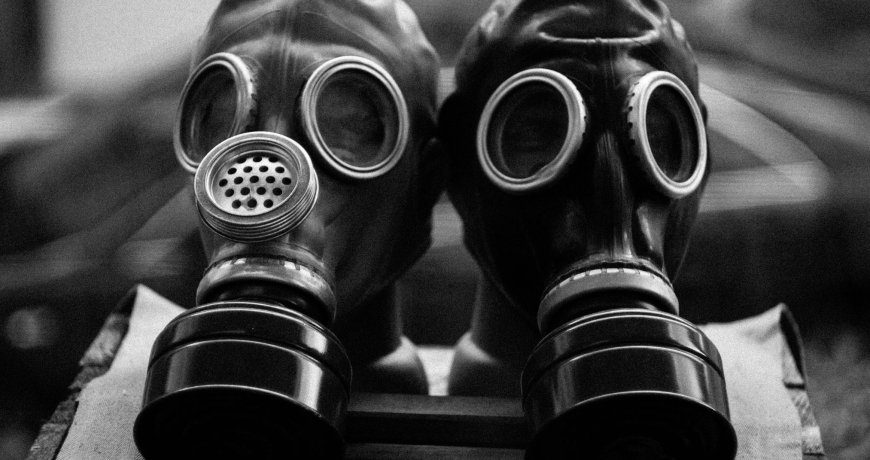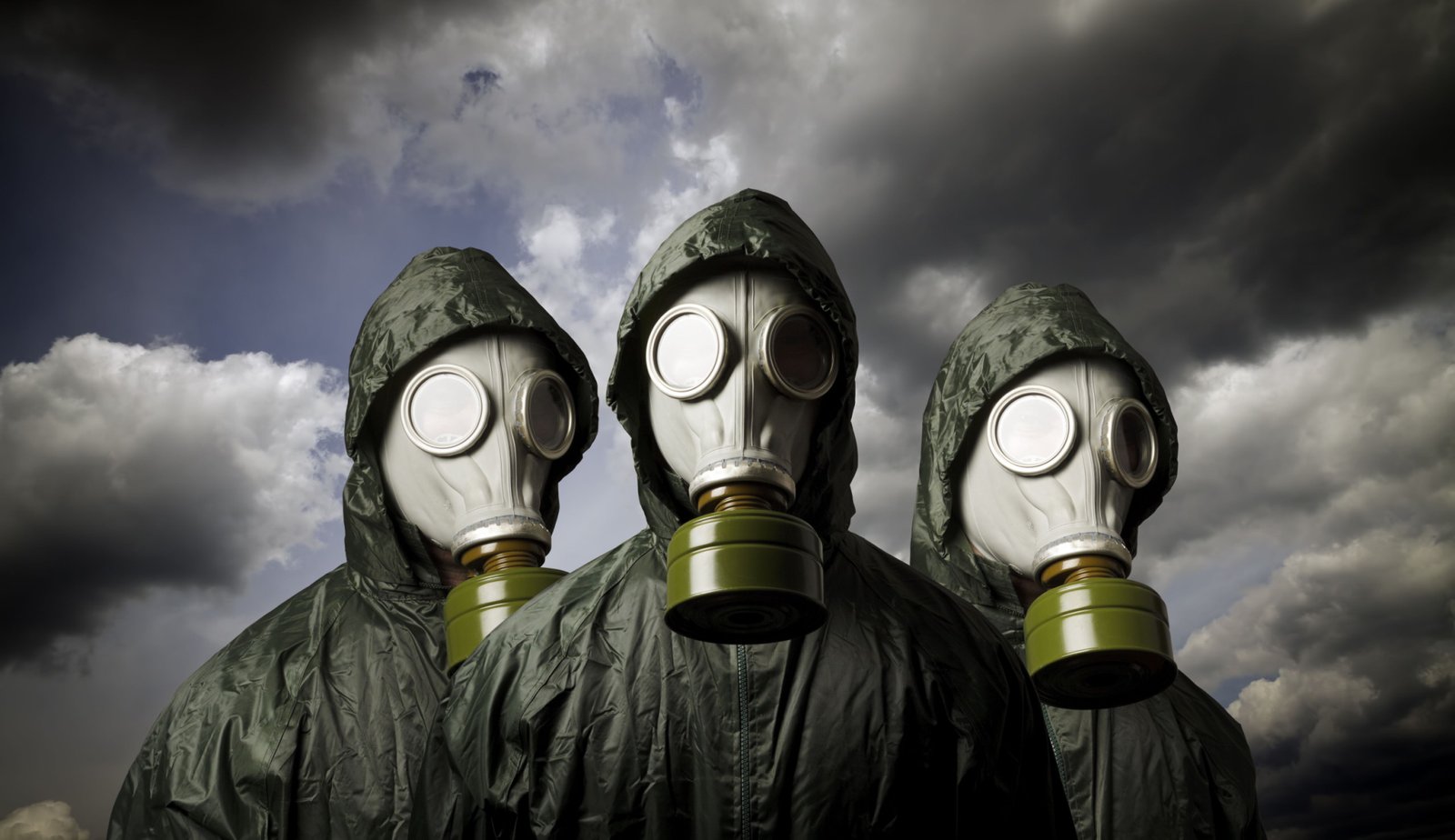How to Identify Safety Risks: GP5 Gas Mask Contain Asbestos?

Do gp5 gas mask have asbestos?
Unboxing the GP5 Gas Mask Mystique
So, you got your hands on a GP5 gas mask, and now the rumor mill’s buzzing with the huge question: does this thing harbor asbestos? Let’s peel back the layers of this mystery in true detective style.
So, you’ve just scored a GP5 gas mask – a real piece of history. Opening that box feels like unearthing a time capsule from the Soviet Union. The design is quirky, almost retro-futuristic, with those circular eyepieces giving off some serious sci-fi vibes.
But amidst the excitement, a hushed question echoes: does this relic hide a potential health hazard? The word on the street is that some of these bad boys might be packing filters with a not-so-welcome guest – asbestos.
As we embark on this exploration, imagine unboxing your GP5, feeling the weight of history in your hands. That is not just a gas mask; it’s a tangible piece of the Cold War era. Now, let’s dive into the rabbit hole, separating fact from fiction in the mystique surrounding the GP5 gas mask.
Getting Cozy with the GP5
Picture this the GP5 gas mask, that Soviet Union made it, with theirs unmistakable design, circular eyepieces, and a filter that’s a bit cone-shaped funky. Like a fashion statement from the Cold War era. But hey, is there a potential health hiccup hidden in that filter containing asbestos?
Alright, you’ve got your GP5 gas mask out, and it’s like stepping into a time machine. The design – those round eyepieces and that quirky cone-shaped filter – it’s iconic. Like having a conversation with history. But, and here’s the twist, is there a potential snag in this vintage coolness?
This gas mask wasn’t just a fashion statement; it was the real deal during the Cold War. Intended to shield against chemical, biological, and nuclear threats, the GP5 was a reliable companion for those uncertain times.
What’s going on with those filter containing asbestos? Are they keeping up with the times, or is there a chance they’ve been harboring asbestos like a secret from the past? Let’s unravel this mystery without losing the charm of the GP5’s unique design.
Asbestos, the Uninvited Guest
Now, let’s talk asbestos. Like that unwanted guest crashing the party – a naturally occurring mineral, once the cool kid in industrial applications. But when its fibers decide to dance in the air, they bring along a playlist of health risks, from lung issues to the dreaded “C” word.
This mineral, once the go-to for its heat resistance and durability, is like the unwelcome guest crashing our historical gas mask party. Asbestos fibers, when airborne, are the party crashers of respiratory systems, potentially causing lung diseases and even the dreaded “C” word.
Back in the day, asbestos was the golden child, finding its way into various industrial applications, and yes, even gas mask filters. The main superhero, seemingly invincible in the face of heat and wear. But as time unfolded, we realized it was a superhero with a dark side – a side that posed serious health risks.
So, imagine wearing your GP5, thinking you’re invincible like a Cold War superhero, only to find out that the filter might be playing host to this unwanted guest. The plot thickens, and the drama around the GP5 gas mask becomes more than just a historical relic – it becomes a health concern. Stay tuned as we uncover the truths behind the asbestos whispers.
The Whispers About Asbestos in GP5 Filters
The rumor mill starts grinding. Some say those older GP5 gas mask filters might have done a little asbestos tap dance. Cue the worry – users and collectors alike start raising eyebrows. Nobody wants to play with asbestos, right?
Here’s where the plot thickens. Rumors start swirling in the air – some whisper that those older GP5 gas mask filters might have a little bit of asbestos hiding in their filters. Cue the collective eyebrow raise. Asbestos is no joke; it’s a health hazard that nobody wants at their party.
Users and collectors, who initially were just vibing with their vintage produced gas masks, suddenly find themselves questioning the unseen. Is there asbestos in the filter? Could the historical charm of the GP5 come with an unexpected health twist?
The gas mask, once a symbol of preparedness during tense times, now becomes a subject of concern.
As we navigate through the whispers and concerns, it’s time to separate fact from fiction and figure out if there’s more to the GP5 story than meets the eye. Is asbestos truly crashing the vintage gas mask party, or are we dealing with a case of historical hearsay? Let’s unravel this tangled thread.
Sorting Fact from Fictionart
Time to cut through the fog. Not every GP5 gas mask comes with an asbestos-loaded filter. There’s a mix of filters out there, like a gas mask buffet.
Some went old-school with asbestos, others played it safe. But how do you know which one’s on your plate?
Now that the whispers about asbestos in GP5 filters have reached a crescendo, it’s time to sort through the facts and fiction. Not every GP5 gas mask is riding the asbestos train. We’re dealing with a mixtape of filters here – some old-school, rocking the asbestos beat, and others playing it safe with asbestos-free tunes.
Imagine this gas mask buffet, where each filter containing asbestos tells its own story. Some filters from the GP5’s journey through time might have dipped into the asbestos era, but as the years rolled on, safety started taking center stage.
Users, collectors, and enthusiasts need to be the detectives in this gas mask mystery. About checking the filter’s credentials, understanding the markings, and deciphering the code to know if you’ve got an asbestos-free ticket or if there’s a bit of a historical risk in your hands.
So, what’s deal your GP5? Is it a walk down asbestos lane, or are you in the clear with a filter that’s singing the safer, asbestos-free anthem? Time to inspect, decode, and ensure your gas mask journey is on the right track. Let’s keep it real – asbestos or not – and continue our exploration of the GP5 gas mask.
Unraveling the Filter Code
Here’s where it gets interesting. Ever checked the markings on your filter? Like the secret code telling you if asbestos’s crashing the party or if it’s a safer hangout. Time to decode those markings and make sure your gas mask is rocking a filter that’s asbestos-free.
Alright, detective, it’s time to get down to the nitty-gritty. Your GP5 filter is like a secret agent, and the markings on it are its code. To crack the case of whether asbestos is on the guest list, we need to unravel this filter code.
Take a close look at those markings. They’re not just random jumbles of letters and numbers; they’re the key to understanding what your filter is made of. Different filters, different eras, different compositions – it’s like a language that tells you the story of your gas mask’s filter containing asbestos.
But decoding this filter code isn’t rocket science. Online resources, experts in the field, or fellow GP5 enthusiasts can guide you through the process. This isn’t just about checking a box; it’s about ensuring the safety of your gas mask experience.
So, as you dig into the markings on your GP5 filter, remember – it’s not just a random exercise. Your way of ensuring that your gas mask journey is free from asbestos surprises. Let’s unveil the secrets behind those codes and keep our gas mask experience both historical and safe.
Living the GP5 Life – Safely
The GP5 gas mask, a time-traveling relic from the Cold War, has its quirks. But that asbestos drama? Not a blanket statement. Stay savvy, check your filter markings, and if in doubt, chat with the experts.
As we wrap up this journey through the GP5 gas mask saga, the overarching theme remains clear: safety first. The GP5, with its circular eyepieces and cone-shaped filter, embodies a bygone era. But beneath the historical charm, the question lingers – is asbestos crashing this vintage party?
We’ve debunked myths, explored the filter code, and navigated the GP5 landscape. But why all the fuss? Because asbestos, once a star player for its heat resistance, has a dark side – a potential link to lung diseases and, yes, lung cancer.
Asbestos-Free
Let’s keep the GP5 vibe historical, cool, and most importantly, asbestos-free.In the realm of protective gear, modern gas masks have evolved to offer enhanced safety features compared to their historical counterparts like the GP-5 gas mask. These contemporary devices utilize advanced technology to provide effective protection against a range of hazardous substances, from poison gases to biological agents.
Equipped with filter cartridges containing activated charcoal and other advanced materials, these masks ensure that the air purified for breathing is free from harmful particulates and chemicals. Among the various types of gas masks available, Powered Air Purifying Respirators (PAPR) stand out as a high-tech solution. Unlike traditional gas mask respirators, PAPRs use a powered fan system to draw air through filters, providing continuous airflow.
Safety On First Place!
This technology allows for prolonged use without the discomfort of breathing resistance commonly associated with non-powered masks. The inclusion of particulate filters, in addition to chemical filters, makes PAPRs versatile in protecting against a wide array of airborne threats.
When using any gas mask or civilian gas mask respirator, certain considerations contribute to their efficacy and user safety. Maintaining a proper seal is crucial, making facial hair a potential hindrance as it can break the seal and compromise protection. Understanding the limitations of the filters, such as the 15 minutes lifespan of some GP-5 filters, is essential for timely replacements.
Additionally, being aware of the types of hazardous chemicals a gas mask is designed to protect against, including chemical warfare agents like mustard gas, aids users in making informed decisions about their personal safety equipment. As technology advances, incorporating these considerations ensures that modern gas masks continue to be effective tools in safeguarding against various airborne threats.




